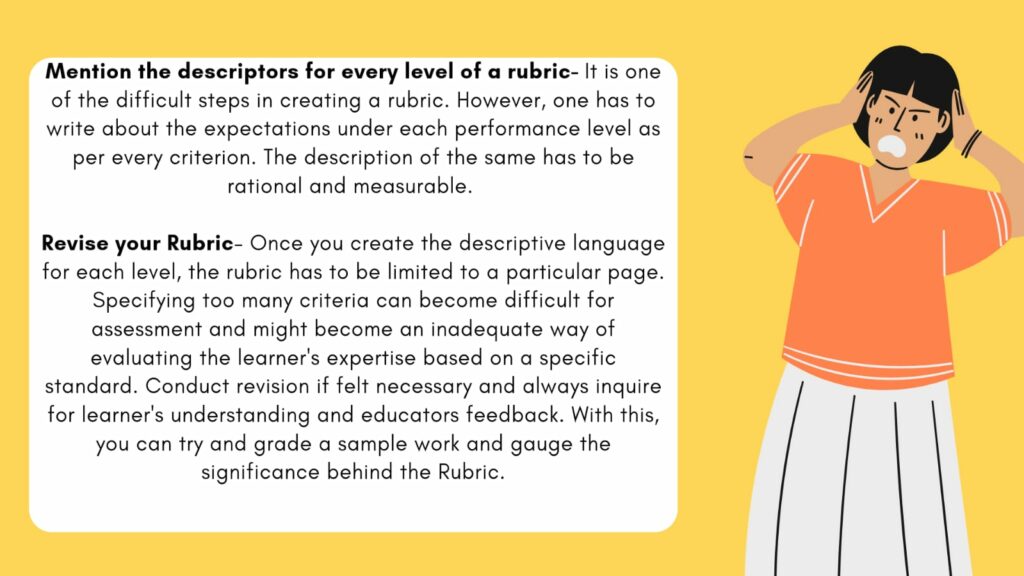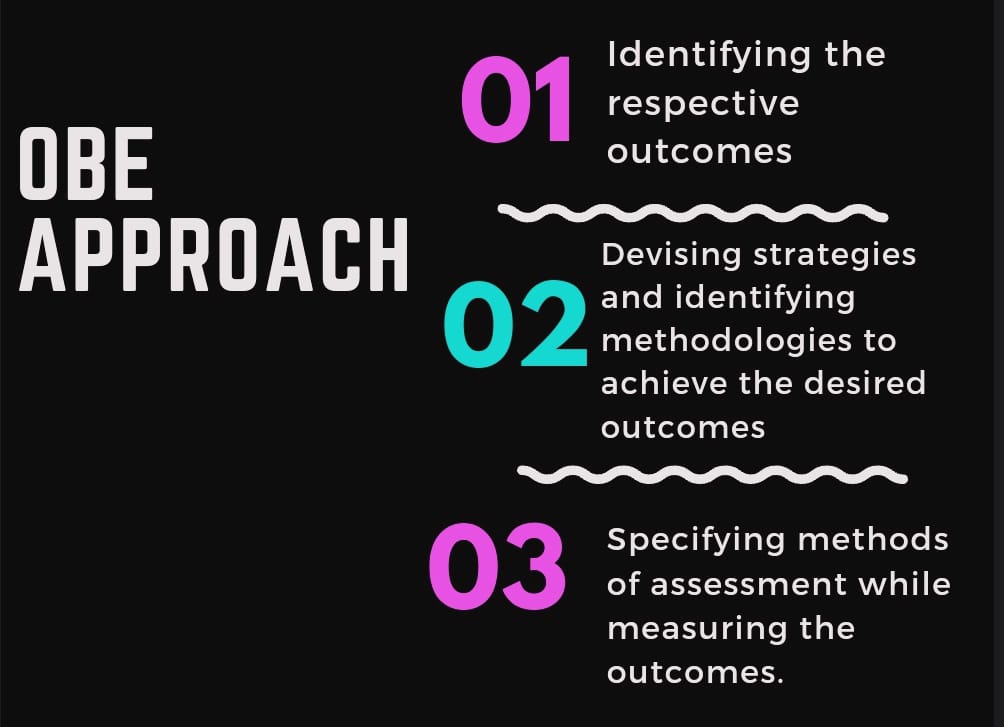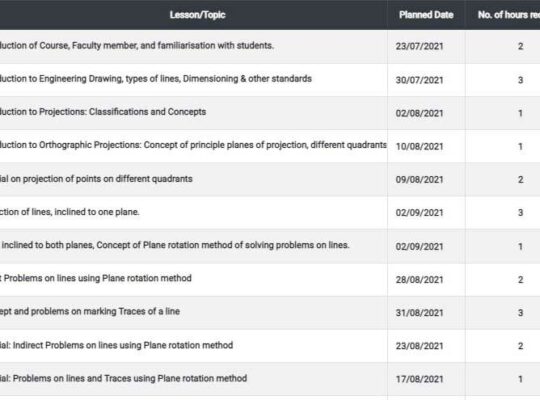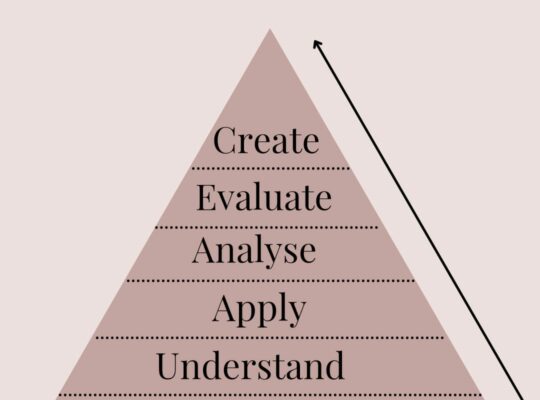Rubrics is one of the effective tools for evaluation based on specified criteria. It assesses, analyses and examines our performance while helping us improve the same. Most importantly, one has to make sure and work with the quality standards.
What is meant by Rubric?
A rubric is one of the assessment tools that gauge your success criteria by including all the components of any student-based task, ranging from verbal to visual. In simple words, it is responsible for keeping an account of the learners’ academic performance like class grades, assignments, participation in class and whatnot. In addition, a Rubric appears to be a constructive tool of evaluation with respective guidelines that promote learning outcomes and objectives.
A rubric mentions the expected outcomes and allows the students to achieve them. Such that one can assess their achievement as per the mentioned criteria.
Rubrics are the scoring criteria that can help in ensuring consistency while letting the students evaluate their work. Such an assessment tool is favorable for the learners as they get to know what is expected of them, learn about the skills they should have and enable the students to do self-assessment to understand the learning process.
What are the characteristic features of a Rubric?
A rubric is a tool of assessment or instruction that consists of several features, which are as follows –
- Criteria– Rubric comprises a list of criteria, which helps the students understand the expected outcomes or objectives an educator has from them.
- Gradations– Gradations highlight if the expected quality standard has been met or not, it consists of a scale that shows the description of what performance has resulted as fair, good, needs improvement, etc. Each gradation is supposed to have descriptors at every level of performance. Yet, in the rubric, there are around 4-6 gradation levels.
- Descriptions– It mentions how a quality assignment appears. In addition, descriptors enable the students to assess and find out their scores.
- Reliability – A favourable rubric used by teachers should facilitate students to arrive at a similar score (regarding any assignment or work).
- Validity– A rubric should possess validity while marking the scores based on overall academic performance instead of making it an easy or a simple task for teachers while grading.
How to Create a Rubric?

To create a rubric for assessment or evaluation of a project or a work, the following are how one can do so:
- Define your Goal – Before you create a rubric, determine the type of rubric one wishes to use, such that it can be determined by the goals or objectives of the assessment.
Ask yourself with the following questions:
- How detailed one wants the feedback to be?
- How will one evaluate the performance?
- What are the necessary standards the students must achieve to perform better?
2. Choose a type of rubric – There are several types of Rubrics; those should have standards that can help the educators determine how to go about it. Also, one can opt for analytical rubric or holistic rubric.

3. Determine the criteria- In this step of creating the Rubric, one has to decide the list of skills an educator would like to evaluate students on (like a particular project). After that, one can even group them based on similarities to avoid technicalities. Rubrics with many criteria are difficult to work with, so one can try and stick to the measurable expectations for various levels of performance. With this, one can easily spot the criteria via grading while explaining them to the students. Also, within the analytic rubric; criteria are listed under the left column.
4. Mention the performance levels– Once you decipher the levels at which the students demonstrate expertise, you will have to figure out what type of score you are likely to assign on each level of mastery. Most of these ratings range between the levels of three to five. Whereas other teachers mainly assign letter grades, numbers, percentages.

5. Mention the descriptors for every level of a rubric- It is one of the difficult steps in creating a rubric. However, one has to write about the expectations under each performance level as per every criterion. The description of the same has to be rational and measurable.
6. Revise your Rubric– Once you create the descriptive language for each level, the rubric has to be limited to a particular page. Specifying too many criteria can become difficult for assessment and might become an inadequate way of evaluating the learner’s expertise based on a specific standard. Conduct revision if felt necessary and always inquire for learner’s understanding and educators’ feedback. With this, you can try and grade a sample work and gauge the significance behind the Rubric.
Pros and cons of Rubrics in Higher Education
Pros
- Rubrics are responsible for providing the students with expected outcomes and objectives. They even allow them to understand several techniques to be adopted in a learning process to secure a perfect score in their tests, assignments etc. To summarize, they are a tool of instruction and assessment.
- Rubrics help the students in deciphering their strengths, weaknesses while mentioning comprehensive feedback on their academic performance. With this, learners become their own teachers and judge the quality of their work accordingly.
- Rubrics are one of the efficient tools that encourages the teachers to set guidelines and benchmarks to gauge the student’s performance or progress. Furthermore, Rubrics even require the educators to specify the standards, expectations and goals.
- With Rubrics, students become more objective, thoughtful and even more mindful.
Cons
- Initially, Rubrics are time-consuming, but once they have been laid out, they are adaptable to several assignments, subjects, grades, etc.
- Sometimes the learners might continuously question the educators regarding the expected outcomes where they end up asking for the same for every assignment they are designated. They get into a habit of knowing what is expected of them with every new work they are asked to complete.
Rubrics for Teachers
Rubrics adopted by teachers encourage better learning. They aim at evaluating or assessing the student’s work efficiently. In addition, educators pay more attention to maintaining the standards which a student must accomplish. Rubric even serves as one of the tools through which the students feel motivated while the teacher helps them unfold the necessary steps to enhance their work. The educators can easily incorporate the same rubric for several assignments too. In total, Rubrics help in evaluating the student’s performance effectively.
Rubrics for Students
The teachers or educators are responsible for formulating the type of assignments that encourage the learners to aim for or fulfil a higher level of accomplishment. Rubrics serve as leverage and help the students work on their performance. All the learners who became a part of this rubric process gain a better understanding of the gradation, expectations, etc. The learners are involved in the creation of the rubric, and this way, they become focused and more responsible. In addition, the students brim with motivation while designing their own assessment. With this, they even learn to stick to the quality standards. Furthermore, when the students work on a project or work, they voluntarily wish to become a part of creating the assessment. Thus, students involved in such a process gain knowledge of the expectations and how to reach specific goals.
Conclusion
Rubrics is one of the constructive tools used in higher education. It is defined as the scoring criteria that assess students’ work while listing out specific guidelines for a project or an assignment. Each mentioned criteria specifies a gradation scale. This scale is primarily qualitative. In total, rubrics are an amalgamation of learning and teaching, while helping the educators and learners in analyzing their performance.

About the Author: Hansika Bhardwaj
Hansika is a proud content writer and enthusiastic person who is willing to embrace the journey. She loves writing poetry when not spending her time researching on education and education technology. She believes and manifests the ideals of hope, magic and positivity. Hansika is currently a student in Humanities Dept. at University of Delhi.
This article has been re-published on Medium





